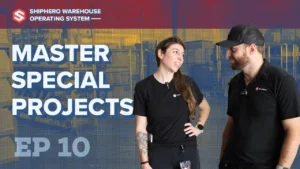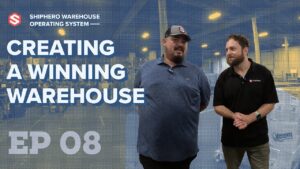Videos » How-To's & Tips | Software
Lot and Expiration Tracking: ShipHero WMS Guides
In this video, our VP of Product, Yosef Haas, shares how Lot & Expiration tracking works in ShipHero. Everything from receiving Lots into bins, setting expirations, optimizing for FEFO (First Expired First Out) or FIFO (First In First Out) and how this can be used for products ranging from medical supplies, perishables and other items needing to be tracking in lots.
Help Docs
How to Use Lots and Expiration Tracking
Video Transcript
So the lot tracking kind of starts with receiving. So when you receive product in, you can record which lot it's associated with. And so what I have here is receiving page and you can see I have one product on this purchase order 10 have been ordered. I've already accepted five. And what I'm going to do is accept or receive in some of the other quantity.
So when I click on it, you can see I've already have two different lot codes that are associated with this product. These are have been previously created. So I can either choose to receive in one of the existing ones. So if the product and receiving is already part of lot one, I can just click on that and put in a quantity or I can actually add a new lot.
So this was a new lot that I hadn’t received before, I just click add lot. And let’s say It's called Lot Three. I can put that there if the lot code has a barcode on it, that scannable code, you can scan that right here and it’ll input it and then I can choose the expiration date for that product. Again,
so we can do that first expired first out. And so I'll choose the expiration date and the location I’m receiving it to. So this is one of those areas where if I already received some of this product under a different lot code into that location, if I try to receive it again into that location with a different lot code, I would get an error, notifying me that I can't, and then I can just change the lot that I’m receiving it to.
So in this case, let's say I want to receive two of them into the receiving location. Let's save and here you’ll see only one lot SKU is allowed per location, so I can just click on the location and I'll just choose one the other locations, select that and save it. So now I've received two of this product into a location with the lot associated with it.
So I'll just search for that product called Chips. If you can see all the different locations that product is in as well as the lot associated with it. So here you can see the one I just received a moment ago that was location A3 lot code was 3, it shows an expiration date. It shows me how many days until it’s expired.
So now if you want to manually just keep track of that, you can see that we also have these filters here. So you can see I want to know, okay, which one? All the products in the warehouse that expire within 30 days. I can click on that and I'll go through all those products. There's also an email you can set up so that if your product is expiring within a certain number of days, you can get an email telling you which ones are expiring.
Yeah, so there is a setting. First of all, I can disable picking if I don't want to pick product that's that's expiring within a certain number of days, I can put that. And you’ll notice we also have FEFO or FIFO. So first expired first out or first in first out. FIFO will be based on when you received it and FEFO will be based on the expiration date.
So the allocation doesn't change. All these settings are more from when you go to pick the order. So as long as threre’s inventory, it will be allocated and then when you create a batch or go to pick an order at that point. ShipHero will determine where to pick it from. Now, again, based on the priority rules from the product detail page. If you go to edit, there's a checkbox down here.
If you're if your product doesn’t need it, just leave that off. When you actually do pack the pack the order and ship it, it will prompt you to verify that the lot that you're packing is the one that we expect, the one that we told you to pack. So there will basically be a prompt in the UI asking you to confirm.
So the picker is just telling you where to go. There isn’t a separate verification of the lot. But this is just to verify it. So this is during the packing phase to verify it. And then of course does get recorded with the order so that if you do need to look up which lot was shipped with an order or look up all the customers that got a specific lot, the shipping reports do have a column for that CDC load lot shipped with that order and then there is a filter as well.
So if there's a recall, you need to find that all the customers that receive this specific lot, you can actually go to the shipment report, put in that lot code and then find all those orders very quickly.



